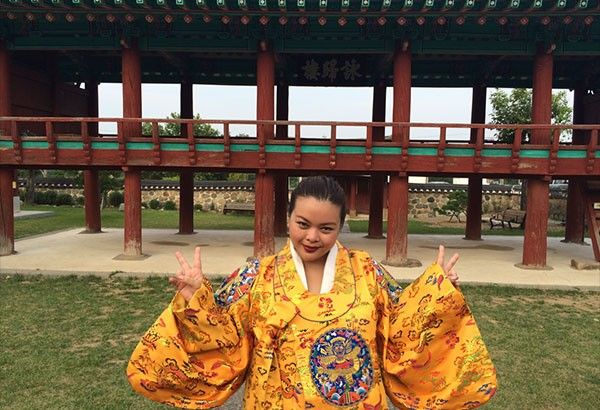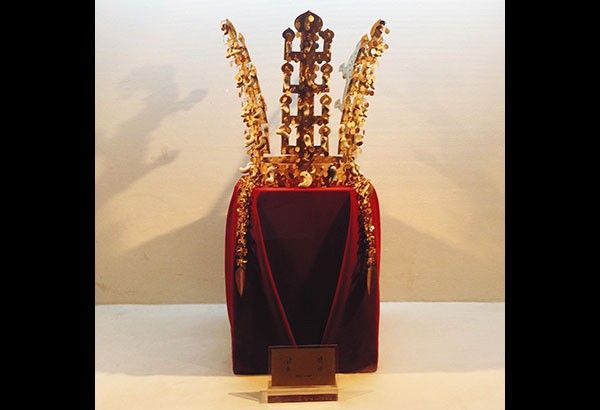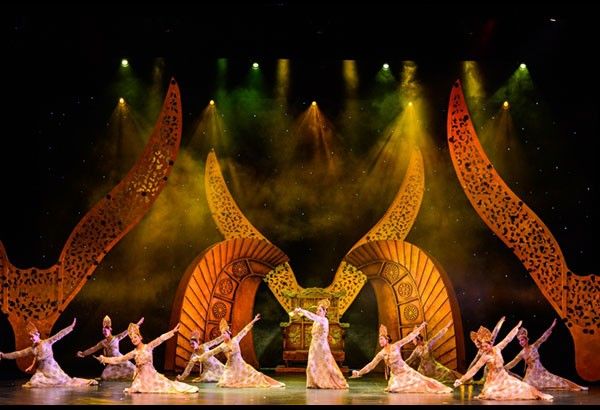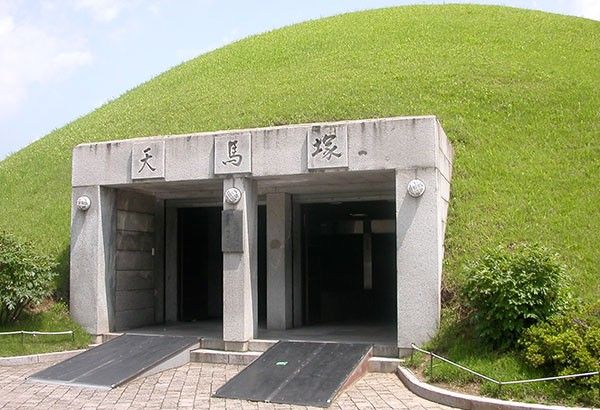The treasures of Gyeongju


It’s been known that one of the most beloved things about travel is its ability to let one absorb culture and knowledge with a certain freedom not found in a more academic setting. Gyeongju in South Korea, a mere hour and a half away from Busan by land, is a treasure trove of Korean history, but imparted in less conventional ways.
Especially for those who love a good game of dress-up, one of the most interesting pockets in the province is the Silla Munhawon, where royal tailors and dressers await to adorn you in different historical garments. And no, we’re not talking a taste of the traditional hanbok. Here, one can dress like a scholar of Confucius, in their classic pale turquoise robes and t-shaped hat, or like a member of the royal court in heavily embroidered silk robes. If you’re lucky like me, you get to slip into the Emperor’s robes and wander the grounds, feeling for a quick second as though the world is your dominion.
While in your new fancy garb, there is a ceremony in which you are asked to write down your heart’s wishes on a white lantern. It could be anything and everything from good wishes for your family’s health to a stable, loving partner to better job prospects to world peace. These will then be taken for a walk while one contemplates on their wishes, before being piled together and burned ceremoniously, the wishes making their way to the heavens in a cloud of smoke and ashes.
Also in the area is the Daerungwun Tomb Complex, which houses the Cheonmachong Tomb, or the tomb of the heavenly horse. From the outside, it appears to be a simple, grass-covered hill, but a quick look around the side reveals an entrance into the extravagant final resting place of a king. When Cheongmachong was excavated in 1973, they discovered 11,500 artifacts dating as far back as the fifth or sixth century. These included gold rings to go on each of the king’s fingers, the most intricately crafted gold crown with jade beads shaped like comma—said to represent fertility, gold bracelets, a gold girdle, the king’s weapons, various kinds of china and pottery, the saddle of the king’s horse, and even the horse itself, which was said to be sacrificed upon the death of the king. What was discovered was also the painting of a horse with eight legs and wings for feet, not only signifying the importance of the horse in Korea’s valued Silla dynasty, but also giving the tomb its name.
A brilliant musical accent to this more museum-like experience is the play Silla Basilla. Perfect for non-Korean speaking tourists, Silla Basilla has no dialogue and instead is done entirely in dance. It is based on the Persian epic poem Kush-nama, which tells the story of a Silla princess falling in love with a Persian prince, and the succeeding consequences of their romance. The staging is extremely engaging, with its incredibly athletic and expressive dancers, fantastic costumes which involve both modernized classics and a play on pleather, beautifully intricate sets moving gracefully throughout the performance, and eye-catching light displays projected onto the stage that seamlessly intersperse with the rest of the show. Whether one is well-versed in Korean history or knows next to nothing about it, Silla Basilla is a theatrical experience that communicates through a universal love story and beyond impeccable production value. It is not to be missed, and truly one of the highlights of a trip to Gyeongju.
Equally theatrical is Shilla Millennium Park, which is definitely a worthy stop. The park itself is a reproduction of aristocratic villages and architecture popular during the Silla era, also housing the set of the 2009 Korean drama, Queen Seondeok. The first hanok hotel, modeled after traditional Korean homes, is also found here, and was popularly featured as the home of the character Yoon Ji-Hoo in the show Boys Over Flowers. One of the biggest draws of the park is the Hwarang show, which features performers in traditional costumes, doing some incredible horse riding stunts and martial arts practiced during the Silla era.
Those looking for a moment of peace after such exciting activity should not miss a trip to the UNESCO world heritage site, Bulguksa Temple. Carved into Mount Toham, Bulguksa is one of the most important temples in South Korea. It houses several of the country’s national treasures, namely two stone pagodas named Seokgatap and Dabotap, four bridges which testify to the finest architectural craftsmanship in ancient Korea, a sarira pagoda which supposedly housed the remains of a queen and eight priests, and two gilt bronze Buddhas named Vairocana and Amitabha. Four kilometers east of the temple is the Seokguram Grotto, which is also a national treasure along with the impressive and formidable giant stone Buddha it houses. Should you come to the temple in the autumn, you’ll find yourself in for a picturesque treat with Japanese maple trees shedding their rust-colored leaves along the temple path.
But when the sun sets on Gyeongju, one of the most breathtaking sights would have to be the Donggung Palace and the Wolji Pond. Here, there are three palace reconstructions visible as islands along this massive man-made pond. In the evenings, the islands are lit up, along with several of the trees surrounding the palaces. There are many things that can be said about this place, but it really must be seen to be believed. There is a beautiful romance about this area, which rounds out the historical mystique that bathes the air of Gyeongju.
While many a vacation is generally spent shopping and trying out new delicious treats, what a trip to Gyeongju offers is the opportunity to spend on unique and enriching experiences, to try something different and learn invaluable things in the process.
And while one may come home with a suitcase possibly lighter than one would expect, one leaves Gyeongju with a satisfied spirit and a full heart.





* * *
Special thanks to Asiana Airlines and the Gyeongsangbuk-do Tourism Corporation for making the trip smooth and enjoyable. For more information, please contact Korea Tourism Organization Manila Office (KTO) at ktomanila@gmail.com. KTO can also be followed at facebook.com/koreatourismmanila or on twitter.com/KTOManila.



















